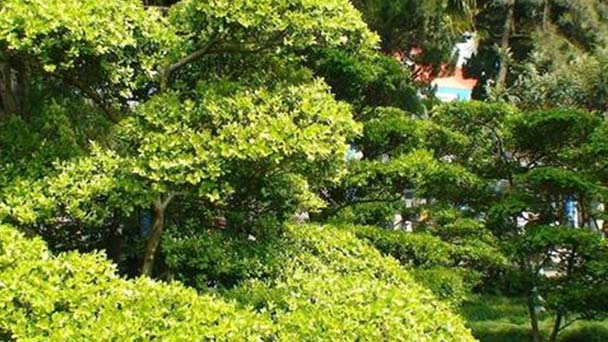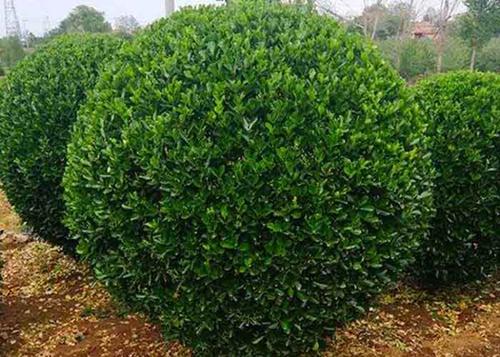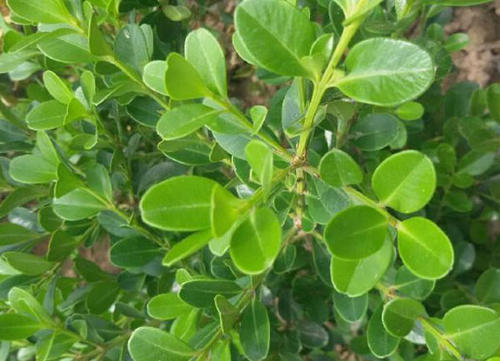How to propagate littleleaf Box
Written by Maggie
Feb 01 2021

Green Littleleaf box looks full of thick vitality, let a person's mood will follow better, then how to propagate Littleleaf box? Let's take a look.
Sowing propagation of littleleaf box
Planting bed for littleleaf box sowing propagation
In early autumn, loose and fertile sand soil with good drainage was selected as the seeding bed, bottom fertilizer (organic fertilizer) was applied for littleleaf box sowing propagation, and insecticides and fungicides were mixed at the same time, and the soil was deeply leveled and made into the seeding bed.
Seeding rate of littleleaf box sowing propagtion
Every square meter 50-60 grams, the seed and right amount of sand are mixed first, and then evenly spread on the seedbed, cover 1-1.5 mm fine soil above again, cover the grass curtain to keep wet.
After the broadcast management
After the sowing propagation of littleleaf box, in order to prevent freezing damage, 5-8 cm of soil should be covered on the grass curtain before the soil freezes in the middle and late winter. In the middle and late spring of the second year, remove the grass curtain and soil covering, and then put plastic arch shed on the seedbed, and the temperature needs to be controlled between 25-30℃. About 20 days for the germs to grow, after which the temperature in the shed should be between 20-25 ° C, and proper watering should be required. In late spring, when the temperature is stable, the plastic vault can be removed. Seedling for sowing propagation of littleleaf box needs to pull weeds lose soil, timely irrigation, topdressing, but also to timely control pests and diseases.

Cutting propagation of littleleaf box
The seedbed for cutting propagation
Choose high terrain, deep soil layer, loose soil, good drainage and irrigation plots for littleleaf box cutting propagation. After removing the grassroots and stones, the soil is formed into a tall bed of about 1-1.2 meters, and then the soil is poured with 5% mancozeb 1500 times plus 10% imidacloprid 1000 times to eliminate the pests and harmful bacteria underground. Seedbed in leveling, with a spade, beat flat, pouring 10% of the decayed dilute human excrement, and then spread a layer of yellow soil or sifted coke mortar on the bed, the thickness of about 5 centimeters.
Cutting propagation of littleleaf box proess
Cutting propagation of littleleaf box can be carried out at any time, but choose the tender branches that grow in those days in summer for cuttings. The cuttings are selected from the excellent branches that are lignified or semi-lignified. After collection, cutting cuttings should be carried out in a cool and leeward place. Cut cuttings, if the festival has grown out of small branches, truncation section along the top and 0.5 cm, then the position of health according to the small branches of the stem section is split into two and a half, cutting into two branches, if have no long branches and branchlets requires to stay 2 days, 1 cm above the top in the bud cut cost aspect, bottom in the bud cut into 0.5 cm, ear shape or sliced.
Cuttings for littleleaf box cutting propagation
Cuttings for littleleaf box cutting propagation should not be too deep. The depth of the big branches is 1 cm for the next stem node to be inserted into the soil. When the twigs are cuttings, the horizontal section is downward, and the depth is appropriate for the mother plant to enter the soil 1 cm. After cutting propagation of littleleaf box, the soil around the cuttings should be compacted, and at the same time, a seepage should be poured to make the lower part of the cuttings and the soil compact. Cutting row spacing is generally 12-15 cm, plant spacing 6-8 cm. Cottage, cuttings on the leaves do not leave too much, but also do not cut off all, the lower part of the leaves can be all even petiole cut, upper leave 2 leaves, and then according to leaf size, each leaf cut again 1/2 to 2/3, reduce excessive consumption of moisture and nutrients.
Management after littleleaf box cutting propagation
Cuttage, to build shade, reduce transpiration, to avoid direct sunlight seedbed. Early spring or late autumn cuttings, also need to cover the film, so that can prevent winter damage. Cuttings for cutting propagation of littleleaf box should also pay attention to frequent watering, in order to keep the seedbed soil moist, seedbed surface soil is not white is appropriate. Topdressing combined with a watering can be carried out, can also use potassium dihydrogen phosphate and urea for foliar spray. Weeding work should be carefully carried out, not collision cuttings.

Latest Updated
- Benefits of Bugleweed - 7 Science-backed Health Benefits
- Bugleweed Dangers & Side Effects - Is It Poisonous?
- How to Plant Evergreen Trees - What You Should Know
- When to Plant Evergreens - Grow Guide for Evergreen Trees
- 12 Wonderful Evergreen Shrubs for Your Garden
- 12 Popular Evergreen Plants with Pictures for Beginners
- When And How To Prune A Lilac Bush Like a Pro
- How to Grow & Care for Lilac Vine (Hardenbergia Violacea)
- Japanese Lilac Tree (Syringa Reticulata) Care & Propagation Guide
- Shumard Oak Pros and Cons - What to Know
Popular Articles
- Winter maintenance of Antirrhinum Majus
- How to Grow Terminalia Mantaly Tree
- How to Grow and Care for Crossostephium Chinense
- How to grow Antirrhinum Majus in spring
- Peristeria Elata (Dove Orchid) Profile: Info & Care Guide
- Underwatered Snake Plant (Sansevieria Trifasciata) - Signs And How To Fix
- How to Care for Brazilian Jasmine Plant (Mandevilla Sanderi)
- How to Grow & Care for Graptopetalum Purple Delight in Summer
- Rosa Chinensis (China Rose): Plant Growing & Care Tips
- How to Care for Baby Sun Rose (Aptenia Cordifolia)